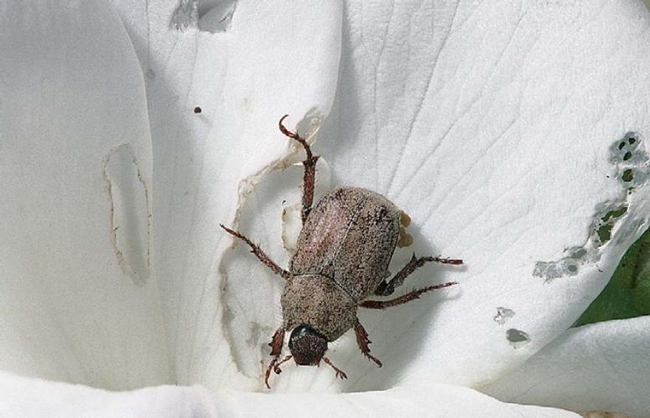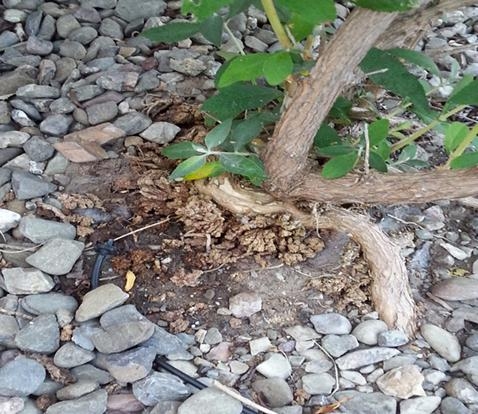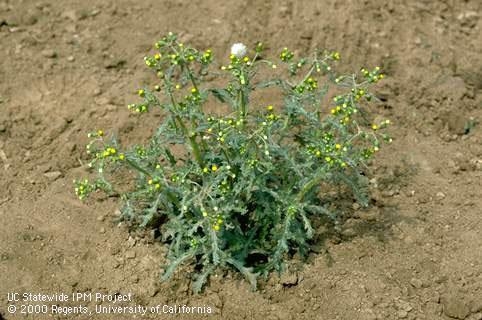Springtime is here! Trees have awakened, roses are budding, and you are preparing the garden for a bountiful growing season. It can't get any better! However, you will improve your bounty when you prepare and deal with these three typical springtime pests. Simple scientifically proven methods to control the following pests and more are available at your local Cooperative Extension via the volunteer Master Gardener program in the form of the telephone hotline or website.
Hoplia Beetles emerge from the ground just in time to decimate most of the white/light/bright colored flowers on every type of plant, but especially roses and elderberries. To manage these damaging pests, place 2-3” of water and a drop of dishwashing liquid into white plastic pails or buckets and incorporate into your garden between plants being attacked. I also often pull out my pruning shears and grab the flowers covered in beetles and cut them off, throwing flowers and beetles into the bucket to prevent escape to damage other flowers. Thankfully, they only infest the garden in the spring for about 2 weeks, saving us from throwing up our arms in surrender and despair!
Spring is always a good time to check for Phytophthora (Root and Crown Rot). During our wet season, make sure your herbaceous and woody plants are not drowning due to poor drainage or settling of the soil around the base of the plant. Check the irrigation system to insure it is not dumping water on the crown and secure the emitter at least one foot away from the trunk. Provide adequate drainage by breaking through compacted soils around the root zone so water doesn't pond around the crown. Remove turf from the base of trees; however, do not mound additional soil on the crown as this will hold moisture and possibly infect the area with “resting spores” of these oomycetes formerly included in the classification of fungi. The picture above shows crown rot on a butterfly bush which developed after a very wet spring with continued moisture from the drip system, enabling the Phytophthora to girdle the trunk.
Let me part with one short story about a vertebrate pest that can ruin your garden and then some. My neighbor called me recently to check out a water leak in her second bathroom. I shut off the valves and stopped the leak. A week and a half later she noticed there was a pile of dirt under the sink. My wife and I looked and found a hole in the wall under the sink where the wallboard had been wet. We pulled out the vanity and opened the wall and found that gophers had been moving dirt into the area under the tub of the adjacent bathroom. Sand was piled up to the top of the side of the tub all the way around it! Over the next 3 days, we removed 4 full wheelbarrows of dirt from under the bath! All the while the neighbor had been using one of those electronic gopher-repellent devices for several years and thought it was working well. SURPRISE! Moral of the story: stick with UCANR data-driven methods for the best pest control. Check them out whenever you are in doubt!


